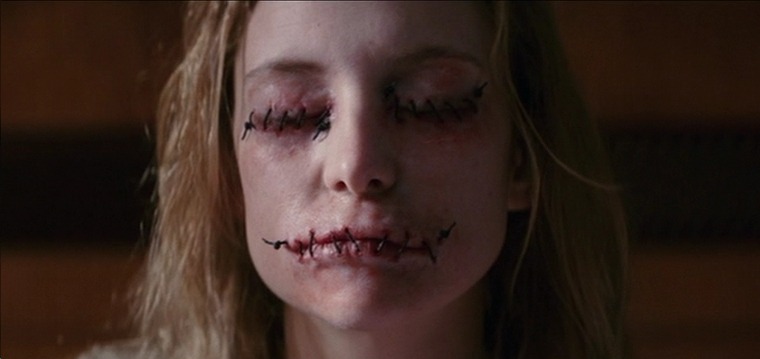** Spoiler Alert - this post contains spoilers about the story Beloved**
Here's your first spoiler folks. This movie is LONG. It clocks in at just under 180 minutes, or three hours. In fact, it's three minutes longer than The Hobbit, and we all know how rough that was to make it through (time-wise, it was an AMAZING movie). If you don't, even I can't help you. Anyway, going into the movie I knew it was going to be a long one. Now having watched it, I realize the main reason it is so long is because the filmmakers tried their best to stay true to the book, including as much relevant information as possible. In fact, I'd say it's one of the best movies I've seen when it comes to that. A good majority of the dialogue was taken straight from the book and for the most part they followed the story plot point by plot point.
That being said, there was definitely a different vibe to the movie than in the book. Which didn't make sense to me at first, since it seemed the filmmakers tried so hard to align themselves with the book. The only thing I could think of was that they interpreted the point of the novel incorrectly, or in a skewed manner. Let me explain.
The movie opens on a graveyard with spine-tingling, eerie music playing the background that I wasn't able to distinguish as English, almost setting the direction of the movie in stone, so to speak (pun intended). That belief is confirmed only a few minutes later when you witness the first "attack" by the baby ghost, the vicious and brutal torture of the family dog. When the other screaming children finally convince the ghost to release the dog, his eye is hanging out of the socket and his leg is so badly mangled Sethe is forced to amputate it. Assuming the dog never did anything personal to the ghost, the idea seems to be that she has no reason and it just attacking so heinously at will because she can. The tone is much more sinister as opposed to the purely mischievous feel of the book. Even the (terrible) effects they use shed Beloved in an evil light. Like literally, they shower her in red light whenever possible.
It doesn't help that the movie is so campy it could be the first part of Deathly Hallows (get it? Cuz they did a lot of camping. Alright moving on). They use an odd filming style, using strange camera angles. Especially during one-on-one conversations. They point the camera directly at each person when they talk, as though they're talking to you. Once I got over my initial confusion, I surmised this was to bring you into the movie, on a personal level. If you felt you were actually a part of the story you could get invested, let your guard down. I began to surmise this theory when they introduced Beloved.
That's her there with Sethe (Oprah Winfrey). I spent an uncomfortable 30 minutes after she was introduced pondering over the filmmakers' interesting choices. Basically, instead of the regular person she was in the book, Beloved in the movie is portrayed as a toddler in the body of a grown woman. It's oddly disturbing and really hard to watch. This makes it all the more horrific when she asks Paul D to "touch her". And even more so when he actually does. And even worse when she ends up pregnant. But I digress. As I was saying, I believe the camera angles were a way to bring us deeper into the story. Portraying Beloved in this way (aside from the fact that it is very, very wrong) is a way to get the audience to let down their guard, be vulnerable. That way you get slammed in the end when she goes completely insane and runs outside, pregnant and completely naked. Which they show on-camera by the way. Weird movie. Very, very weird.
In the end, the stark dichotomy between the two portrayals of Beloved make the point of the story in general hard to reconcile. In the novel, she is a manifestation of something that knows what it wants and is actually able to go about it. In the film, she's a toddler who wants something, but her brain literally isn't developed enough to understand so she just throws fits. The whole movie. I think the choice of actors, the change-up of Beloved, and the overall theme difference caused a lot to be lost in translation. In the movie, Beloved was literally a parasite. She clung to Sethe, leeching the very life from her, as she demanded to be taken care of because she was in fact still a toddler on the inside. In the novel, you are also given much more background information, explaining why the scene at the end with the ladies from town is so important. What Beloved does to Sethe may kill her, but it heals her internal scars, as well as those caused by the rift between the family and the rest of the town.
So. Do you agree? Disagree? Have you not read the book and/or seen the movie?? Well what are you waiting for?!
The novel can be picked up at your local bookstore or online (hint: I found a copy on Amazon as cheap as 7 dollars!)
The movie can be streamed from Amazon Instant Video to rent ($1.99) or buy ($9.99) or on YouTube for $1.99




